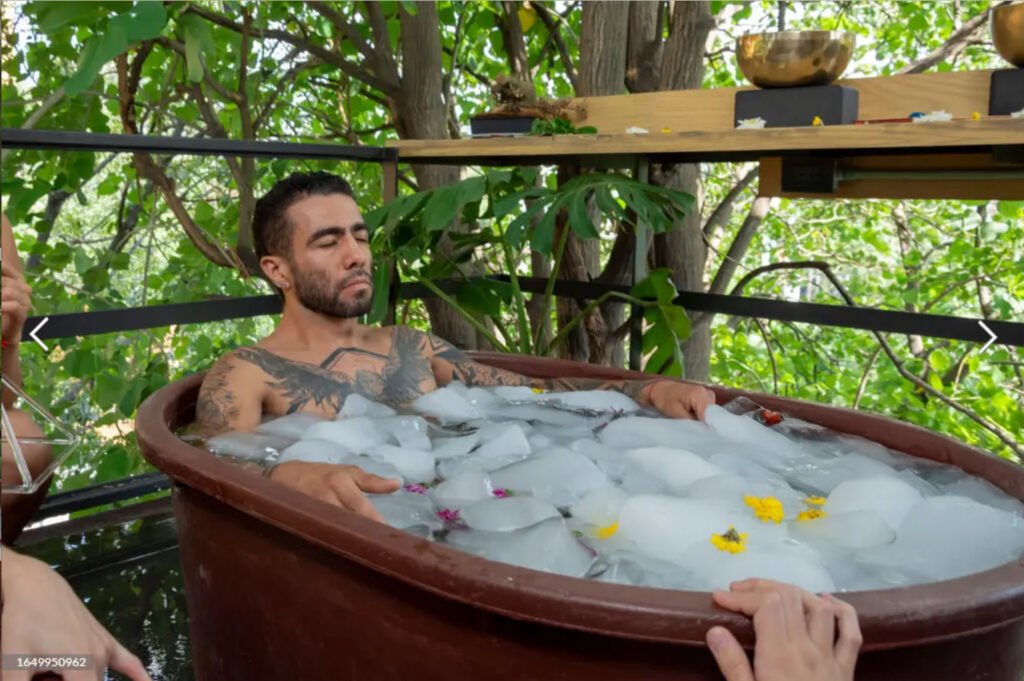The Truth About Ice Baths: Myths That Could Harm You
Lucie
December 11, 2024

Understanding Ice Baths: Benefits, Myths, and Risks
Ice baths, or cold water immersion, have become a popular recovery method among athletes and fitness enthusiasts. This practice involves immersing the body, or parts of it, in cold water, typically ranging from 50 to 59°F (10 to 15°C), to reduce muscle soreness and speed up recovery. But how do ice baths work, and are they suitable for everyone?
How Ice Baths Work: The Science Behind Cold Therapy
When the body is exposed to cold temperatures, blood vessels constrict, reducing blood flow to muscles and minimizing inflammation. This can aid in reducing muscle damage and speeding up the recovery process. After the bath, when the body warms up, blood vessels dilate, allowing fresh blood to circulate, bringing oxygen and nutrients to the muscles for repair.
The cold exposure also numbs the sensory nerves, offering a temporary pain relief. This makes ice baths particularly beneficial after intense training or competition, where muscle discomfort is common.Link to the the American Council on Exercise (ACE)

Common Myths About Ice Baths
There are several misconceptions about ice baths that can lead to confusion:
Ice Baths Eliminate All Muscle Soreness: While cold immersion can reduce inflammation, it doesn’t completely prevent muscle soreness. Studies show that ice baths reduce discomfort but don’t eliminate it entirely.
Ice Baths Are Safe for Everyone: Not true. Individuals with cardiovascular conditions, such as high blood pressure, may face risks. Cold exposure can induce vasoconstriction, which could worsen certain health conditions.
Colder Is Better: While cold temperatures help reduce soreness, extremely low temperatures can cause muscle stiffness and even hinder recovery. The key is finding the optimal temperature that provides the most benefits without overdoing it.
Risks of Ice Baths: What You Need to Know
While ice baths are popular, they do carry risks:
Hypothermia: Prolonged exposure to cold water can lower body temperature dangerously, leading to hypothermia. Symptoms include shivering, confusion, and fatigue. It’s vital to limit exposure time and monitor the water temperature.
Nerve Damage: Cold exposure can lead to temporary or permanent nerve damage, particularly in individuals with conditions like diabetes. It’s essential to listen to your body and stop immediately if you feel unusual sensations.
Circulatory Issues: Ice baths can constrict blood vessels, reducing blood flow to extremities. People with circulatory problems like Raynaud’s disease should be cautious.

Alternatives to Ice Baths
If you’re looking for safer recovery methods, consider these alternatives:
Active Recovery: Light physical activities like walking, yoga, or cycling can boost circulation and help with muscle repair.
Contrast Therapy: Alternating between hot and cold water helps stimulate blood circulation and may reduce soreness.
Compression Therapy: Wearing compression garments helps improve blood flow and reduces swelling, offering an effective alternative.
Foam Rolling & Massage: These methods target soft tissue, reducing muscle tightness and improving flexibility, which can promote faster recovery.
Conclusion
Ice baths can be beneficial for muscle recovery, but they aren’t the best option for everyone. It’s important to understand the science behind them and weigh the potential risks. Whether you choose ice baths or alternative methods, the key is finding a recovery routine that works for you.



